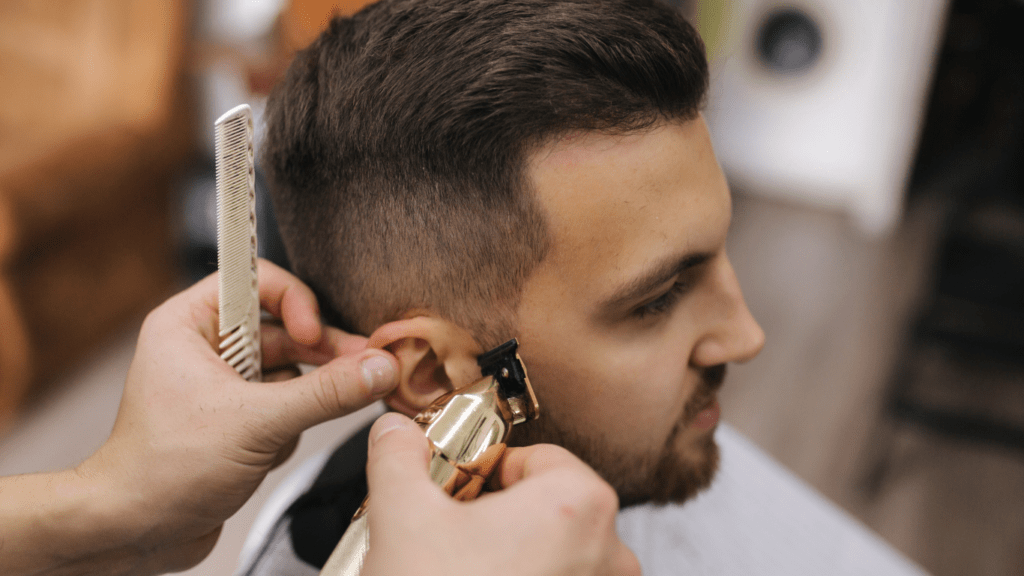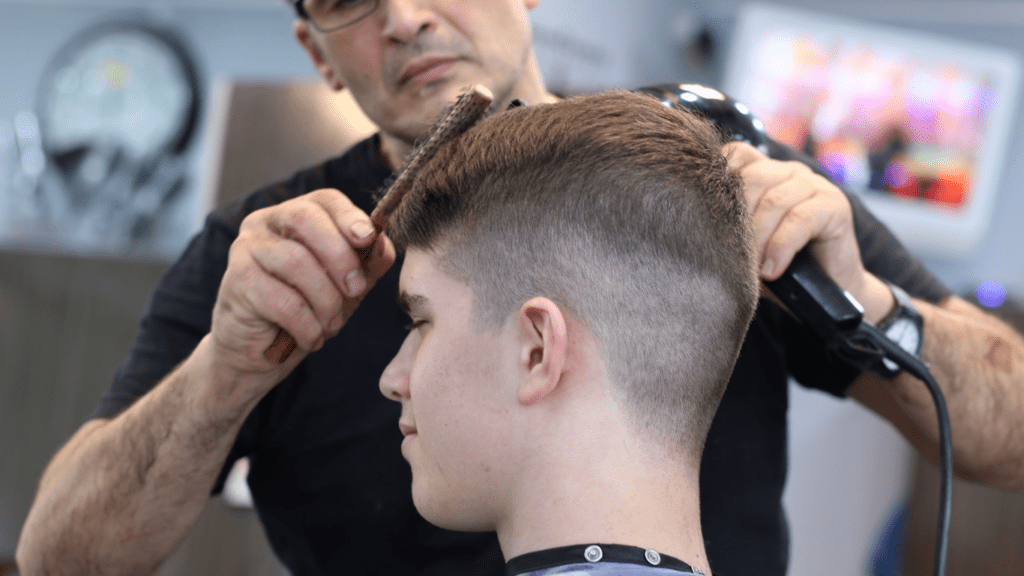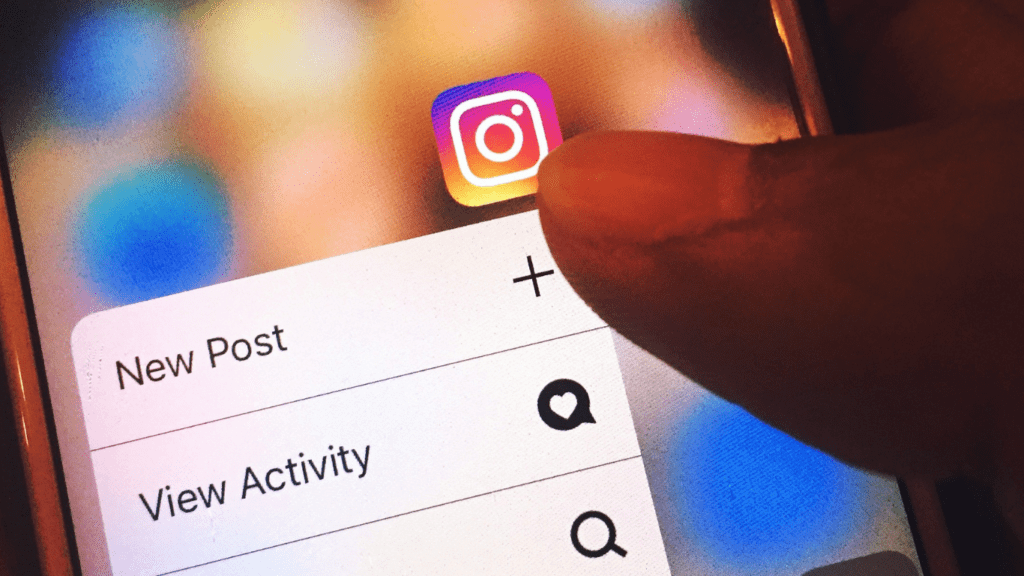Historical Perspective on Men’s Grooming
Men’s grooming dates back thousands of years. Ancient Egyptians practiced meticulous grooming, using oils and perfumes to care for their hair and skin. Archaeological findings reveal combs, razors, and mirrors among their personal items. Egyptians associated cleanliness with spirituality and social status.
In ancient Greece, men frequented public baths, utilizing oils and scrapers called strigils to cleanse their bodies. Grooming was integral to Greek culture, symbolizing youth and beauty. Greek men also styled their hair and beards meticulously, often using heated tongs to curl them.
Romans adopted similar practices from Greeks, adding innovations like heated baths and sophisticated shaving tools. Wealthy Romans indulged in grooming routines that included depilation and fragrant oils. Clean-shaven faces became a fashion statement during different periods of Roman history.
During the Middle Ages, European men had different grooming practices depending on their social class. Nobility used perfumes and ornate combs, while commoners’ grooming was more utilitarian, focusing on hair brushing and basic cleanliness. Monks and clergy often shaved their heads or maintained tonsures as signs of their religious devotion.
In the early modern era, elaborate grooming became a status symbol. The French court in the 17th century saw men sporting powdered wigs, rouged cheeks, and intricate hairstyles. Grooming rituals were extensive, involving scented powders and creams, reflecting one’s wealth and sophistication.
The 19th century marked the rise of barber shops as social hubs for men. Barbers offered haircuts, shaves, and even minor medical procedures. The advent of safety razors in the early 20th century revolutionized men’s grooming, making daily shaving more accessible.
Throughout these eras, men’s grooming reflected more than just practical concerns. It intertwined with cultural norms, social status, and personal identity, setting the stage for the modern evolution of grooming practices.
The Rise of Modern Grooming Products
Men’s grooming has witnessed a transformation with innovative products flooding the market, setting new standards in personal care.
Innovations and Breakthroughs
Technological advancements and scientific research have led to groundbreaking grooming products. Electric trimmers with precision control, for example, provide a convenient shaving experience.
Skincare lines tailored specifically for men now include moisturizers, serums, and anti-aging creams. Startup brands are offering natural and organic grooming solutions, reflecting a shift towards sustainable and eco-friendly products.
Key Market Players
Major companies dominate the grooming sector, constantly pushing the envelope. Gillette, founded in 1901, revolutionized shaving with its safety razors. Philips expanded its range with advanced electric shavers and beard trimmers. Estee Lauder, through its brand Lab Series, offers premium skincare products tailored to men’s needs.
L’Oréal targets diverse customer bases with inclusive grooming lines. These companies set industry standards, driving the continuous evolution of men’s grooming.
Cultural Shifts in Men’s Grooming
Men’s grooming has undergone significant transformation over the years. This evolution aligns closely with cultural shifts that reflect broader societal changes.
Influence of Media and Celebrities
Media and celebrities have had a profound impact on men’s grooming trends. Hollywood icons like James Dean and Elvis Presley popularized the rugged yet polished look in the 1950s and 60s. Today, influencers on platforms like Instagram and YouTube set grooming trends. For example, David Beckham’s various hairstyles have inspired millions, boosting sales in grooming products. Media reinforces grooming standards by showcasing ideals of masculinity and style.
Changing Societal Norms
Societal norms around men’s grooming have evolved. Previously, excessive grooming was seen as feminine. Now, it’s widely accepted and encouraged. The rise of the metrosexual man in the early 2000s broke stereotypes, with men embracing skincare, facials, and manicures. This shift reflects broader acceptance of self-care regardless of gender. Millennials and Gen Z, in particular, view grooming as essential for confidence and self-expression.
The Role of Technology in Grooming

Technology has revolutionized men’s grooming, breaking barriers and introducing innovative solutions. New tools and digital platforms have transformed grooming practices, making them more efficient and accessible.
High-Tech Grooming Tools
Innovative high-tech tools like:
- electric razors
- laser hair removal devices
- smart toothbrushes
have become mainstream. Electric razors from brands like Braun offer precision, speed, and convenience. Laser hair removal devices provide long-term hair reduction, appealing to men seeking minimal maintenance.
Smart toothbrushes from companies like Philips monitor brushing habits and encourage better oral hygiene through mobile apps. These tools improve grooming experiences, delivering professional-quality results at home.
E-Commerce and Digital Marketing
E-commerce platforms have made grooming products easily accessible. Major online retailers like Amazon offer a wide range, from razors to skincare. Digital marketing enhances product visibility, targeting consumers based on preferences and behaviors.
Social media influencers and grooming brands use targeted ad campaigns to reach potential customers. Subscription services like Dollar Shave Club offer convenience with regular deliveries. These advancements in e-commerce and digital marketing have democratized access to high-quality grooming products for men worldwide.
Future Trends in Men’s Grooming
Men’s grooming continues to evolve with sustainability, personalization, and technological advancements at the forefront.
Sustainability and Eco-Friendly Products
- Market trends show that sustainability has become a major factor in consumer decision-making.
- Many brands are now focusing on eco-friendly ingredients and packaging to reduce the environmental impact.
- Brands use recyclable materials, biodegradable formulas, and cruelty-free certifications to attract the environmentally conscious consumer.
- Shaving creams and aftershaves featuring natural oils, plant-based ingredients, and minimal plastic packaging are gaining popularity.
- According to a 2021 report by Grand View Research, the global organic personal care market is expected to grow at a CAGR of 9.5% from 2022 to 2030.
Personalized Grooming Solutions
The concept of one-size-fits-all is fading as brands introduce personalized grooming products tailored to individual needs. Companies utilize data analytics and AI technology to create customized skincare regimens based on skin type, lifestyle, and preferences.
Services like customized subscription boxes send curated grooming products on a regular basis, allowing for a tailored grooming experience. High-profile brands like Clinique and L’Oréal leverage AI skin analysis tools to recommend bespoke products. Personalized beard grooming kits, including specific oils and balms, cater to the unique characteristics of each beard type, enhancing overall grooming satisfaction.



 Senior Fashion & Beauty Writer
Eric Camp, a seasoned writer and fashion expert, lends his sharp eye for trends and beauty to Glam World Walk. With a background in luxury retail and editorial work, Eric dives deep into the latest runway trends, offering readers insightful takes on the intersection of style and culture. His beauty product reviews and fashion industry analyses make him an indispensable part of the team, keeping readers ahead of the curve on all things chic and stylish.
Senior Fashion & Beauty Writer
Eric Camp, a seasoned writer and fashion expert, lends his sharp eye for trends and beauty to Glam World Walk. With a background in luxury retail and editorial work, Eric dives deep into the latest runway trends, offering readers insightful takes on the intersection of style and culture. His beauty product reviews and fashion industry analyses make him an indispensable part of the team, keeping readers ahead of the curve on all things chic and stylish.
